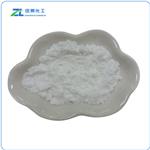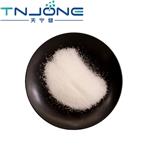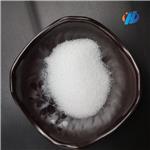- L-Alanine
-

- $25.00/ kg
-
2024-04-25
- CAS:56-41-7
- Min. Order: 1kg
- Purity: 99%
- Supply Ability: 5000kg/week
- L-Alanine
-

- $0.00 / 1kg
-
2024-04-20
- CAS:56-41-7
- Min. Order: 1kg
- Purity: 99%
- Supply Ability: 10000kg
- L-Alanine
-

- $50.00 / 1kg
-
2024-04-18
- CAS:56-41-7
- Min. Order: 1kg
- Purity: 99.10%
- Supply Ability: 50000kg
Related articles - L-alanine as food additive
- L-alanine is the L-enantiomer of alanine. It has a role as an EC 4.3.1.15 (diaminopropionate ammonia-lyase) inhibitor and a fu....
- Apr 29,2022
|
| | L-Alanine Chemical Properties |
| Melting point | 314.5 °C | | alpha | 14.5 º (c=10,6N HCl,dry sub.) | | Boiling point | 212.9±23.0 °C(Predicted) | | density | 1,432 g/cm3 | | refractive index | 1.4650 (estimate) | | FEMA | 3818 | DL-ALANINE | | storage temp. | 2-8°C | | solubility | H2O: 100 mg/mL | | form | powder | | pka | 2.34(at 25℃) | | color | White to almost white | | PH | 5.5-6.5 (100g/l, H2O, 20℃) | | Odor | odorless | | Odor Type | odorless | | optical activity | [α]20/D +14.0±1°, c = 5% in 5 M HCl | | Water Solubility | 166.5 g/L (25 ºC) | | λmax | λ: 260 nm Amax: ≤0.03
λ: 280 nm Amax: ≤0.02 | | Merck | 14,204 | | BRN | 1720248 | | Stability: | Stable. Incompatible with strong oxidizing agents. | | InChIKey | QNAYBMKLOCPYGJ-REOHCLBHSA-N | | LogP | -0.68 | | CAS DataBase Reference | 56-41-7(CAS DataBase Reference) | | NIST Chemistry Reference | Alanine(56-41-7) | | EPA Substance Registry System | L-Alanine (56-41-7) |
| | L-Alanine Usage And Synthesis |
| Description | Alanine (also called 2-aminopropanoic acid, α-aminopropanoic acid) is an amino acid that helps the body convert the simple glucose into energy and eliminate excess toxins from the liver. Amino acids are the building blocks of important proteins and are key to building strong and healthy muscles. Alanine belongs to non-essential amino acids, which can be synthesized by the body. However, all amino acids may become essential if the body is unable to produce them. People with low-protein diets or eating disorders, liver disease, diabetes, or genetic conditions that cause Urea Cycle Disorders (UCDs) may need to take alanine supplements to avoid a deficiency. Alanine has been shown to help protect cells from being damaged during intense aerobic activity when the body cannibalizes muscle protein to produce energy. Alanine is used to support prostate health and is important for the regulation of insulin.
L-alanine is the L-enantiomer of alanine. L-alanine is utilized in clinical nutrition as a component for parenteral and enteral nutrition. L-alanine plays a key role in transferring nitrogen from tissue sites to the liver. L-Alanine is widely used as nutrition supplements, as sweetener and flavor enhancer in the food industry, as flavor enhancer and preservative in the beverage industry, as intermediate for medicine manufacturing in pharmaceutical, as nutritional supplement and sour corrective agent in agriculture/animal feed, and as intermediate in manufacturing of various organic chemicals.
| | References | [1] http://www.ajiaminoscience.com/products/manufactured_products/l-amino_acids/L-Alanine.aspx
[2] http://www.foodchemadditives.com/applications-uses/1500
[3] http://www.vitaminstuff.com/amino-acid-alanine.html
| | Description | L-Alanine is a non-essential amino acid. It is produced by direct β-decarboxylation of L-aspartate by L-aspartate β-decarboxylase or transamination of pyruvate in the glucose-alanine cycle and is a precursor for gluconeogenesis. Dysregulation of L-alanine metabolism is associated with various disease states, including diabetes, metabolic syndrome, ketotic hypoglycemia, and acquired acute lactic acidosis. | | Chemical Properties | White crystalline powder | | Chemical Properties | A white, odorless powder having a sweet taste | | Physical properties | pI 6.01, dissociation constants: pK1 2.34, pK2 9.69.
| | Occurrence | Natural constituent of protein in plants and animals; found in apple, beef, carob, pea, soybean, wine and
zucchini | | Uses | L-Alanine plays a vital role in glucose-alanine cycle between tissue and liver. It is used for protein construction as well as involved in the metabolism of tryptophan and vitamin pyridoxine. It provides energy for muscles and central nervous system in order to strengthen the immune system. It helps in the metabolism of sugars and organic acids, and enhances the germination rates of Bacillus subtilis spores. It also displays a cholesterol-reducing effect in animals. | | Uses | Alanine is an amino acid that can act as a skin-conditioning agent. It is usually used in combination with other amino acids. | | Preparation | Anthrobacter oxydans HAP-1 hyper produces DL-alanine in a nongrowth-associated manner. | | Production Methods | L -Alanine is industrially produced from L -aspartic acid by means of immobilized Pseudomonas dacunhae cells in a pressurized bioreactor. An alanine racemase-deficient mutant of Arthro-bacter oxydans was reported, that produces75 g/L L -alanine from glucose with a yield of 52% and 95% e.e. A small amount of L -alanine is still isolated from protein hydrolysates.
| | Definition | ChEBI: The L-enantiomer of alanine. | | General Description | L-Alanine, a non-essential amino acid,?is produced enzymatically from?L-aspartate using aspartate β-decarboxylase.?It is the smallest among all the amino acids.
Pharmaceutical secondary standards for application in quality control, provide pharma laboratories and manufacturers with a convenient and cost-effective alternative to the preparation of in-house working standards. | | Biochem/physiol Actions | L-Alanine is a nonessential amino acid, which is highly concentrated in muscle. It is a key player in the Glucose-Alanine cycle, which enables the removal of pyruvate and glutamate from muscle to the liver. Once in the liver, glucose is regenerated from pyruvate and returned to the muscle while glutamate ultimately participates in the urea cycle to form urea. The Glucose-Alanine cycle aides to conserve ATP in muscle for muscle contraction, while the energy burden of gluconeogenesis is imposed upon the liver. Alanine inhibits pyruvate kinase to regulate gluconeogenesis and glycolysis in order to maintain glucose homeostasis during starvation. Alanine prevents hepatic autophagy. Alanine formation is a result of transamination of glutamate and pyruvate. | | Safety Profile | Mutation data reported. When heated to decomposition it emits toxic fumes of Nox | | Purification Methods | Crystallise alanine from H2O or aqueous EtOH, i.e. crystallise it from 25% EtOH in water, or recrystallise it from 62.5% EtOH, wash it with EtOH and dry it to constant weight in vacuo over P2O5. [Gutter & Kegeles J Am Chem Soc 75 3893 1953, Walsh J Biol Chem 264 2394 1989.] 2,2'-Iminodipropionic acid is a likely impurity. [Beilstein 4 IV 2480. 2481.] |
| | L-Alanine Preparation Products And Raw materials |
|